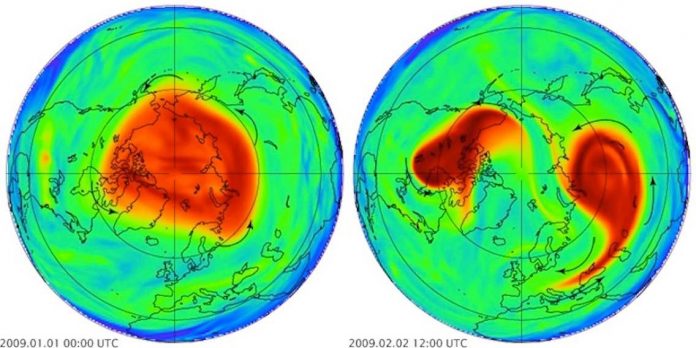New year, worse weather. After a relatively mild start to the winter season, 2019 is about to get a lot colder—and the polar vortex is to blame.
This whirlwind of cold air forms every fall and sits in the stratosphere above the North Pole, but it split into multiple parts earlier this month. Unfortunately for us, a disruption like that can cause major changes to our normal weather patterns.
“These are quite dramatic events,” William Seviour, an atmospheric scientist at the University of Bristol, told Popular Science. “Even though they happen in the stratosphere. . . we see an impact that propagates down to the surface.”
Experts believe that the recent changes above the North Pole will cause temperatures to drop drastically in the northeastern U.S, western Europe, and northern Asia over the next month. However, we may already be seeing some effects of the fractured vortex.
The first major storm of the year dumped snow across several regions of the country last week, indicating to meteorologists that a shift to extreme winter weather is underway.
“I think the snowstorm [last] weekend was related to the vortex split,” Judah Cohen, a researcher and polar vortex expert, told The Washington Post. “I think we’re seeing the impacts already.”
With more snow coming this weekend, it sounds like he’s right. Winter Storm Harper is expected to form into a widespread weather event by Friday, piling more snow on the Midwest and the Plains and affecting areas of the Northeast that escaped last week’s storm.
A blast of a bitterly cold Arctic air is expected to enter the eastern U.S. late this week as well, bringing some of the coldest weather we’ve seen this season. By Sunday, temperatures in the central and eastern parts of the country could drop to 10 to 25 degrees colder than normal.
The bad news doesn’t stop there: once this cold snap sets in, it’s here to stay.
“These impacts can last four to six, and maybe eight, weeks,” said Cohen, explaining that it’s likely for the worst weather conditions to peak in February and potentially last through the spring.
If you’re wondering how many bottles of wine you’ll need to get through this winter, one genius weatherman has the answer.





























